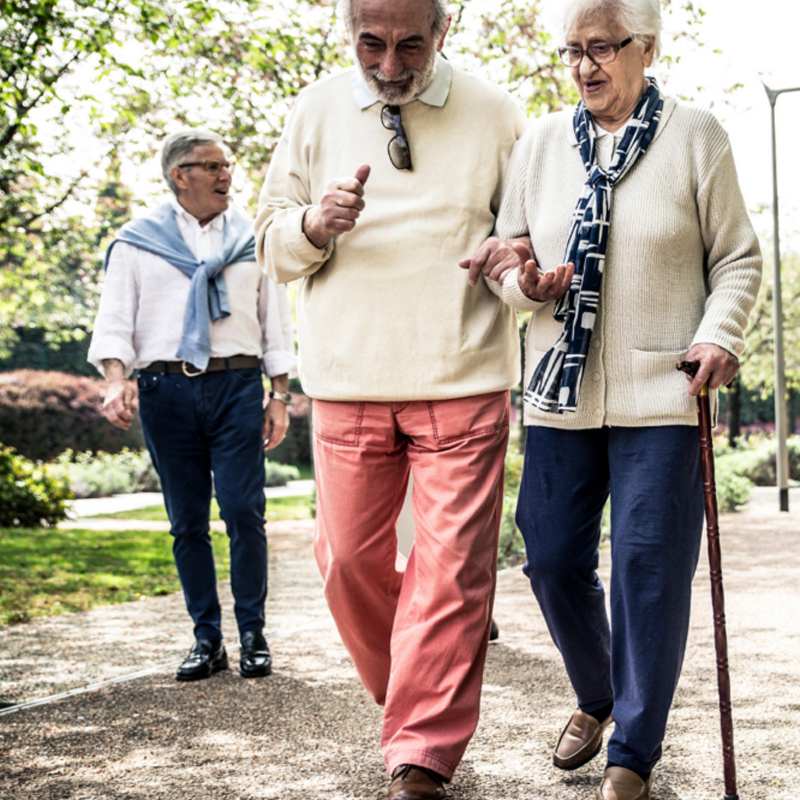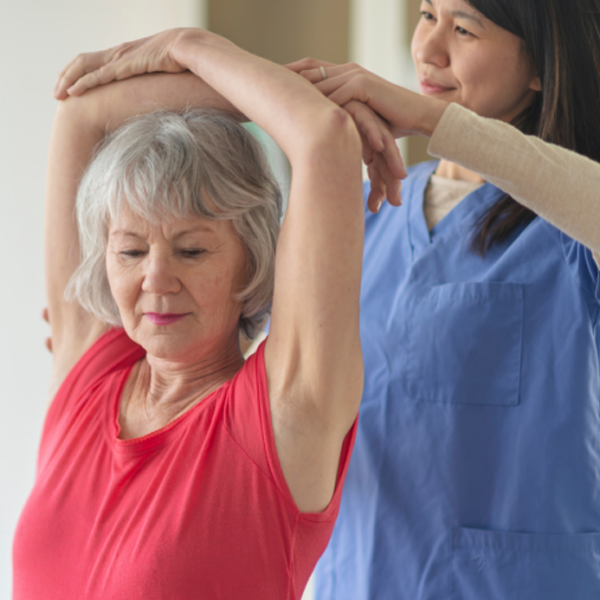 What is osteoarthritis?
What is osteoarthritis?- What causes osteoarthritis?
- How is osteoarthritis diagnosed?
- How can doctors treat my osteoarthritis?
- How is osteoarthritis different from rheumatoid arthritis?
- Are there any arthritis management strategies I can take on myself?
Osteoarthritis is the most common form of arthritis, causing joint pain, swelling, and stiffness. What causes this disease, which affects more than 32 million Americans? Is osteoarthritis an autoimmune disease? What can you do to alleviate your suffering?
If you’ve been diagnosed with osteoarthritis, we have answers that will help you understand this disorder and how to best manage its symptoms.
What Is Osteoarthritis?
Osteoarthritis is a chronic joint disease that breaks down the cushiony cartilage in the body’s joints, including the ankles, feet, fingers, hips, knees, lower back, and shoulders. We do not know the exact cause of this illness, which, over time, can irreversibly destroy the cartilage and even affect the underlying bone.
There are actually around 100 diseases that affect the connective tissue and joints in the body, and osteoarthritis is one of the most common of these illnesses.
Osteoarthritis causes discomfort, particularly in the joints of the body. The signs of this disease include:
- Loss of mobility and flexibility in the joint
- Pain with movement
- Physical tenderness when you touch the affected joint
- Popping or cracking sounds when you use the joint
- Stiffness, particularly after having been inactive for a time
- Swelling of the soft tissue around the joint
- The sensation of two bones grating together
What Causes Osteoarthritis?
 While the cause of this disease isn’t yet fully understood, we do know there are risk factors associated with osteoarthritis. They include:
While the cause of this disease isn’t yet fully understood, we do know there are risk factors associated with osteoarthritis. They include:
- Age. The older you are the more you’re at risk for developing osteoarthritis
- Birth defects or heredity. Scoliosis or hip dysplasia, for example, or other inherited joint defects can lead to osteoarthritis
- Sex. Women are more likely to develop osteoarthritis than men
- Injury. Ligament damage, for example, can lead to osteoarthritis
- Muscle weakness. Your joints suffer higher strain the weaker your muscles are.
- Obesity. Greater body weight puts stress on your joints, which increases the damage to your cartilage
Some of these risk factors can’t be helped, but maintaining a healthy diet and lifestyle can help mitigate symptoms or the disruption the pain from osteoarthritis brings to your life.
How Is Osteoarthritis Diagnosed?
Your doctor will thoroughly examine you, applying careful pressure on the affected joints to gauge your pain levels. After this initial exam, your doctor will likely follow up with:
- An analysis of the fluid around your joints to look for inflammation
- Blood tests to rule other possible causes for your pain
- MRI, or magnetic resonance imaging, to look at the soft tissues in the body, including the cartilage
- X-rays to look at the space between the bones as well as the bones themselves
Once osteoarthritis has been diagnosed, there are several treatments your doctor can try to decrease your pain and slow the progression of the disease.
How Can Doctors Treat My Osteoarthritis?
There are several non-surgical interventions that can help with the pain of osteoarthritis:
- Aerobic and strength training
- Anti-inflammatory and pain medications
- Cortisone injections into the affected joint
- Injection of a gel called viscosupplements to lubricate joints
- Orthotics/bracing
- Nutritional supplements
- Physical therapy
- Self-management for pain (for example, taking yoga)
- Topical analgesic medications
- Transcutaneous electrical nerve stimulation (TENS), a low voltage current that relieves pain
- Weight loss
 There are also surgical treatments available to help restore mobility and lessen pain. For example:
There are also surgical treatments available to help restore mobility and lessen pain. For example:
- Arthroscopy or arthroplasty can remove loose cartilage and “clean out” the joint
- Cartilage repair to improve how the two bones coming together at the joint
- Joint replacement such as a total knee or hip to remove the arthritic joint
- Osteotomy surgery removes the end of the joint to realign it and ease your pain
Eating nutritious foods and maintaining a healthy weight, and exercising are all important to fighting osteoarthritis. Stay active to keep your joints functioning well for many years to come.
Osteoarthritis is only one type of arthritis. You may have heard of rheumatoid arthritis, which has some similarities to osteoarthritis, but also some major differences.
How Is Osteoarthritis Different From Rheumatoid Arthritis?
Rheumatoid arthritis is an autoimmune disease. Osteoarthritis is not. An autoimmune disease occurs when the body’s immune system attacks healthy cells. That’s exactly what happens with rheumatoid arthritis.
Osteoarthritis is caused by the wearing down of the cartilage that cushions the joints and keeps your bones from rubbing uncomfortably together. However, rheumatoid arthritis and osteoarthritis both cause joint pain, swelling, and stiffness. Both diseases can get worse over time.
Some of the differences between osteoarthritis and rheumatoid arthritis include:
| Osteoarthritis | Rheumatoid arthritis |
|---|---|
| Usually starts after age 50 | Usually start between the ages of 30 and 60 |
| Affects the feet, hips, knees, and spine—but is less likely to affect the hands | Most often affects the feet and hands |
| Patients experience pain and swelling | Patients experienced heat, pain, redness, stiffness, and joint tenderness |
| The pain is asymmetrical affecting only one side | The pain is symmetrical, meaning both wrists, both ankles, both knees on either side of the body are affected |
| Upon X-ray, doctors may see bony growths | Blood work shows inflammation and anemia; can also cause the bones to deteriorate |
Are There Any Arthritis Management Strategies I Can Take on Myself?
 When you’re diagnosed with osteoarthritis, our doctor will work closely with you to develop self-management strategies to improve the quality of your life.
When you’re diagnosed with osteoarthritis, our doctor will work closely with you to develop self-management strategies to improve the quality of your life.
There are classes you can take that help people living with chronic conditions to develop coping strategies. Also, getting physically active in a way that is comfortable for you will help you improve your condition. Many gyms have water exercise classes designed to help people living with the discomfort of “bad” joints get mobile and active.
Additionally, physical therapy is a great option to learn physical strategies such as stretching and even how to perform everyday tasks in a way to avoid pressuring the arthritic joints. Losing weight is extremely helpful as well. As the weight comes off it may even be easier to get even more active. These strategies, combined with effective pain management, are exactly what the doctor ordered for osteoarthritis sufferers.
Celebration Foot and Ankle works closely with our patients suffering from arthritis symptoms. Please don’t suffer in silence; instead, talk to us about your symptoms. We can help.


